
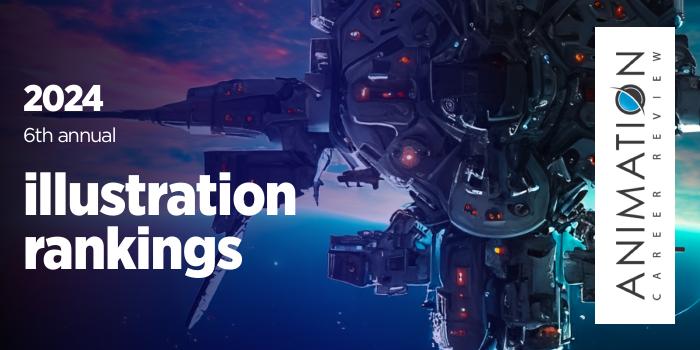
What are the top private illustration schools in the US for 2024?
| Ranking | School | State |
|---|---|---|
| 1 | School of Visual Arts | New York |
| 2 | Rhode Island School of Design | Rhode Island |
| 3 | ArtCenter College of Design | California |
| 4 | Ringling College of Art and Design | Florida |
| 5 | Savannah College of Art and Design | Georgia |
| 6 | Pratt Institute | New York |
| 7 | California College of the Arts | California |
| 8 | The New School’s Parsons School of Design | New York |
| 9 | College for Creative Studies | Michigan |
| 10 | Brigham Young University | Utah |
| 11 | Maryland Institute College of Art | Maryland |
| 12 | Minneapolis College of Art & Design | Minnesota |
| 13 | Columbus College of Art and Design | Ohio |
| 14 | Otis College of Art and Design | California |
| 15 | Cleveland Institute of Art | Ohio |
| 16 | Syracuse University | New York |
| 17 | Kansas City Art Institute | Missouri |
| 18 | Washington University in St. Louis | Missouri |
| 19 | Milwaukee Institute of Art and Design | Wisconsin |
| 20 | Academy of Art University | California |
| 21 | Pacific Northwest College of Art at Willamette University | Oregon |
| 22 | Rocky Mountain College of Art and Design | Colorado |
| 23 | Laguna College of Art and Design | California |
| 24 | University of the Arts | Pennsylvania |
| 25 | Pennsylvania College of Art and Design | Pennsylvania |
Our 2024 list of the Top 25 Private Illustration Schools in the US. For an explanation of ranking criteria, click here.
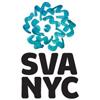
The School of Visual Arts (SVA) is a community of creatives that includes faculty and alumni who were involved in five of the 2024 Academy Award-nominated films as Computer Animators, Illustrators, Producers, and more. Within SVA are a number of departments that provide degree programs at all levels.
The SVA Illustration Department has several paths, courses, and workshops for students seeking careers in Illustration, Entertainment, Animation, and other related areas. For degree-seeking students, the department provides an Illustration BFA and an Illustration as Visual Essay MFA. BFA program features include access to faculty and mentors who are professionals in the industry; opportunities to gain hands-on experience through internships and other experiential learning programs; and a senior portfolio curriculum that allow students to develop professional works in an area of focus.
Illustration BFA students will complete 120 credit hours, including 72 credits in studio art courses. Coursework explores drawing and illustration, painting, storytelling, writing, comics, books and zines, digital coloring, and visual computing. Elective studio courses allow students to explore areas such as motion graphics, web design, and stop-motion animation. Course examples for the program include Creating Unforgettable Characters; Pictorial Projects I-II: Illustration; Cool Books; Digital Collage Illustration: Telling Stories in Layers; Still and Moving: Low-Tech Animation; and Motion Graphics Techniques I-II.
Before graduating from SVA, Illustration students have plenty of opportunities to compete in competitions and work for places such as The New Yorker and The Village Voice. SVA Illustration graduates go on to establish successful careers in fields such as Advertising, Textile Design, VFX Art, Animation, Fashion Design, Book Publishing, Fine Art, Graphic Design, Printmaking, Film, Packaging, and Greeting Card Design.
For students seeking a degree in a specialized area of Illustration, School of Visual Arts has a Comic BFA Program. The curriculum for this program is similar to the Illustration BFA curriculum. Comic BFA students will also take other courses such as Principles of Cartooning I-II; Lettering Comics; Graphic Design Solutions for Illustrators and Cartoonists; Comic Book Superheroes and American Society; and Pictorial Projects I-II: Cartooning.
SVA’s MFA Illustration as Visual Essay Department was established in 1984. The department’s full contact MFA is a competitive 60 credit hour, two-year program that accepts just 20 students per year. All MFA students benefit from 24/7 access to personal workspaces; guest lecturers, speakers, and mentors; the Illustration Business Boot Camp; internship opportunities; and participation in exhibits and gallery shows.
Students in all SVA programs have access to the school’s study abroad program as well as SVA offices in Seoul, South Korea, and Shanghai, China, where students can collaborate, network, participate in workshops, and attend lectures.
In addition to coursework and projects in computer illustration, creative writing, storytelling, and visual essay, SVA MFA students have the opportunity to audit classes in Fine Arts, Animation, and Film. Course examples for the program include Drawing II; The Digital Book; Painting I-II; Creative Writing Workshop I-II; Book Seminar; Perpetual Appetizers; Studio Workshop I-II; History of Storytelling; and computer Illustration Portfolio.
The SVA Illustration as Visual Essay MFA program culminates with a Thesis Project completed over two courses.
For students seeking a shorter program, SVA has numerous options. Examples include Illustration as Design as Illustration (10 sessions); Animals and Creatures in Illustration (10 sessions); Careers in Illustration: A Drawing Workshop (six sessions); Crash Course for Artists, Illustrators, and Cartoonists (10 sessions); Etching: Illustrating Books with Prints (10 sessions); Comics Poetry: Experimenting with Text and Image (10 sessions); Fearless Drawing (four sessions); and Silkscreen: The Artist's Book Series (10 sessions). These single courses and workshops can last anywhere from a few days to several months, and some options can be completed entirely online.
Graduates of the School of Visual Arts are prepared for careers across industries. As mentioned, Illustration alumni have worked on major productions and won Academy Awards. They have launched their own studios such as Augenblick Studios and Titmouse, and worked with top studios such as Pixar, Disney, and DreamWorks. Others have worked with DC Comics and Marvel, or for brands such as Prada and Vans.
School of Visual Arts opened in 1947 as the Cartoonists and Illustrators school. Classes began with just three teachers and 35 students. Today, SVA serves approximately 3,440 students enrolled in dozens of BFA, MA, MFA, and MPS programs. School of Visual Arts is accredited by the Middle States Commission on Higher Education (MSCHE), with individual program accreditation by the National Association of Schools of Art and Design (NASAD) and the Council for Interior Design Accreditation (CIDA).
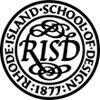
Illustration is the largest major at Rhode Island School of Design (RISD). The program, which serves approximately 300 undergraduates, also launched an MFA in 2022.
The Illustration program at RISD features access to RISD Museum, Gelman Student Gallery, Woods-Gerry Gallery, and ISB Gallery; printmaking studios and labs such as the Co-Works Research Lab, Nature lab, and Color Lab; and the Fleet Library.
Collectively, these academic resources provide access to more than 90,000 works of art and 150,000+ circulating books; software such as Maya, After Effects, and InDesign; concerts, lectures, screenings, visiting artists, and art directors; industry leaders from across the U.S. who offer feedback through annual portfolio reviews; and a mix of student and curriculum related exhibitions throughout the academic year.
The undergraduate Illustration program, which leads to a BFA, requires completion of the Foundation Year. Courses include First-year Literature Seminar; Drawing I-II; Topics in History, Philosophy, and the Social Sciences; Spatial Dynamics I-II; Theory and History of Art and Design I: Global Modernisms; and Theory and History of Art and Design II: Premodern Worlds. During the Foundation year, students will also select one non-major studio elective.
Other course examples include Augmented Design; Digital 3D for Illustrators; Illustrator as Designer; Words, Images, and Ideas; Character and Environment Design for 3D Gaming; Type in Motion; Animalia; Editorial Illustration; Merging Worlds; Visual Thinking; and History of Illustration.
Throughout the RISD Illustration BFA program students will participate in a number of workshops such as Maya Basics, Pigments & Emulsions, and ZBrush Sculpting and Illustration. The BFA Program at Rhode Island School of Design culminates with the completion of a professional portfolio and public exhibition.
The Illustration MFA at Rhode Island School of Design is a 60-credit hour advanced studio program that consists of seminars, art and design coursework, and electives from any department. Studio examples include Perception and the Art of Communication; Social Engagement and Agency; and Narrative Structures. Seminar examples include Contemporary Visual Narrative; Isms and Illustration—Critical Theory and Illustration History; and Media Issues and Literacy—Research Practicum.
Elective examples include Visible Cities; Environmental Aesthetics; Losing Paradise, Inventing the World; Future Gender; and Traditions, Trappings, Culture, Kitsch. Other course examples include Building Narrative: Writing Workshop; and Graduate Illustration Studio I-IV.
The MFA program at Rhode Island School of Design culminates with the Graduate Thesis completed across two Seminars: Articulating Connections-Guided Thesis Prep; and Paradigms and Contexts—Publishing the Thesis and Beyond.
Graduates of the Illustration programs at RISD have been hired at major studios and networks such as DreamWorks, HBO, Pixar, PBS, and Fox. Some RISD alumni have also gone on to launch their own studios and freelance businesses.
Founded in 1877 as both a school and a museum, Rhode Island School of Design is one of the first independent colleges of art and design in the U.S. This private, nonprofit college serves 2,620 students enrolled in 44 full-time bachelor’s and master’s degree programs.
RISD is accredited by the New England Commission of Higher Education (NECHE) and the National Council for State Authorization Reciprocity Agreements (NC-SARA). The Architecture, Landscape Architecture, and MA in Teaching programs have special accreditation by the National Architecture Accrediting Board, Landscape Architectural Accreditation Board, and the RI Department of Education, respectively.

The Illustration BFA program at ArtCenter College of Design (ArtCenter) has six different tracks that allow students to train for careers in everything from children’s publishing to VFX. Options include Illustration Desigin; Entertainment Arts; Surface Design; Fine Art Painting; Motion Design; and Entertainment Arts- Consumer Products.
Illustration Design prepares students for careers ranging from Storyboard Artist to Scientific Illustrator to Children’s Book Illustrator. In Entertainment Arts, students develop animation skills and product development for the entertainment industry (films, TV, and video games).
In Surface Design, students develop the skills needed to pursue careers in Textile Design and Graphic Illustrated Imagery. Fine Art Painting focuses on craft and technique as a precursor to the conceptual process. Motion Design prepares students for success in the fields of Advertising, Film, VFX, Music Videos, and Public Service Announcements (PSAs).
Students in Entertainment Arts-Consumer Products will develop product development, animation, graphic design, and children’s book illustration skills, among others.
The ArtCenter Illustration BFA (with track), consists of 120 credit hours. Illustration Design students will take courses such as Digital Illustration; Children’s Book Illustration; and Illustration Design Lab. Key courses for the Entertainment Arts track include Storyboarding; Visual Development; and Composition for Film. Surface Design features courses such as The Art of Fashion’ Introduction to Textile Design;’ and Craft Techniques.
Fine Art Painting students will take courses such as Wet Paint; Painting Projects; and Re-Presentation: Narrative and Bodies. Motion Design includes courses such as Sequential Design 3; Advanced Motion Studio; and Type 5 Motion. And finally, Entertainment Arts-Consumer Products focuses on courses such as Character Design; Graphic Design for Entertainment Arts; and Introduction to Maya and 3D Animation. Note that many tracks have overlapping coursework, so have the opportunity to study across tracks.
Graduates of the Illustration BFA program at ArtCenter College of Design may continue their studies by enrolling in the school’s Interdisciplinary MFA program. This option allows students to customize the degree to support any medium. Other program features include individual studio spaces; access to state-of-the art facilities, software, galleries, and project studios; and study abroad opportunities in Paris, Berlin, Mexico City, and Cologne.
ArtCenter partnerships with major companies and studios across the U.S. have also provided opportunities for BFA and MFA students to intern with or establish salaried employment at places such as Microsoft, Riot Games, Mattel, Blizzard Entertainment, Nike, DreamWorks, Walt Disney Imagineering, Netflix, Apple, Ford, WB, Facebook, BMW, Amazon, and Google.
ArtCenter Illustration students have also worked with clients such as Pictures Animation, The New Yorker, Wieden+Kennedy (Tokyo), Marvel Studios, Nike, Los Angeles Times, Adidas, Smithsonian Magazine, and Wildlife Conservation Society.
ArtCenter College of Design serves approximately 2,425 students from more than 50 countries. Founded in 1930, the school has campuses in Pasadena and Los Angeles, California, along with satellite studios in Petersen Automotive Museum (Miracle Mile, Los Angeles) and Berlin, Germany. ArtCenter provides 11 undergraduate programs; 10 graduate degree programs leading to an MFA or MS; a joint MS/MBA program; and undergraduate minors for Business, Creative Writing, and Social Innovation students.
ArtCenter College of Design is fully accredited by the WASC Senior College and University Commission (WSCUC) and the National Association of Schools of Art and Design (NASAD).
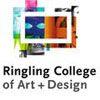
The Illustration Department at Ringling College of Art and Design (RCAD) has a BFA program with two paths including General Illustration or Visual Development. Both options provide a rigorous studio-based curriculum with a liberal arts foundation. Students also benefit from participation in real-world projects with local businesses; networking opportunities with visiting artists from DreamWorks and other major studios; and participation in the Society of Illustrators Annual Competition.
All RCAD Illustration students have the opportunity to work at RCAD’s In-House Design firm the Design Denter; connect with more than 200 unique companies thru Ringling’s experiential education initiative INDEX (Industry Experience); and internships with major companies and studios such as Disney, Hasbro, and Pixar.
The RCAD Illustration BFA program also provides access to painting and drawing studios, two Cintiq labs exclusively for illustration, and three additional Cintiq labs with 24-hour access. In addition, every RCAD Illustration student receives a laptop fully equipped with the latest Adobe Creative Suite software.
The General Illustration path explores illustration as it relates to 2D and 3D; traditional and digital media; and current techniques used in the industry. The program also explores the fundamentals of color theory, anatomy, and composition. Course examples include Figure Drawing; Illustration Media; Advanced Illustration; History of Illustration; Development of Art & Ideas; 2D Design; and Professional Practices.
Visual Development explores illustration as it relates to animated and live-action productions for film, TV, themed entertainment, advertising, publishing, and graphic novels. This area also explores illustration for comics, games, and toy design. Course examples include Figure Anatomy; 3D Design for Illustration; Visual Development I-IV; Painting I-II; Writing Studio; and Film & Narrative.
To enhance either path, RCAD provides 10 minor options that require 15 credit hours taken outside the BFA degree program. Examples include Graphic Design, Realistic Painting, Business of Art + Design, Visual Development, Creative Writing, and Film Studies.
In addition to the internship program, Illustration BFA students have the opportunity to participate in RCAD’s semester-long exchange program or a four-to-five-week summer program in Florence, Italy at Studio Arts Center International (SACI). Students may also participate in RCAD’s Annual Illustration show Illest of the Ill.
Graduates of the Illustration BFA program at Ringling College of Art and Design are prepared to pursue careers across industries. Program alumni have been hired at major companies and studios such as Lucasfilm, United Airlines, Riot Games, Marvel Comics, GM, Walt Disney, American Greetings, Cartoon Network, Apple, EA Games, Google, and Hallmark.
Ringling College of Art and Design is a private, not-for-profit college accredited by the National Association of Schools of Art and Design (NASAD) and the Southern Association of Colleges and Schools Commission on Colleges (SACSCOC). Founded in 1931 by Dr. Ludd M. Spivey (then president of Southern College) and circus baron John Ringling, RCAD serves approximately 1,705 students enrolled in 11 different majors leading to a BFA degree, two majors leading to a BA, and minor options in 10 areas.
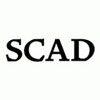
Savannah College of Art and Design (SCAD) has an Illustration program that provides degrees at all levels. Across options, students have opportunities to gain skills in an additional area of interest and/or a specialized area of Illustration through a minor or single courses. Minor examples include Animated Illustration and Publication Design; Storyboarding; Illustration for Surface Design; Fashion; Themed Entertainment Design; Visual Effects; Advertising and Branding; Scientific Illustration; Animation; Illustration for Entertainment; Graphic Design; Design for 3D Action Figures; and Game UX.
Specific degree programs for students seeking an Illustration program include a Visual Communication BA with an Illustration concentration (available at the Atlanta and Savannah campuses); BFA in Illustration (Atlanta, Hong Kong, Savannah); Illustration MA (Atlanta, Savannah, eLearning); and Illustration MFA (Atlanta, Savannah, eLearning).
All BA and BFA students will complete the SCAD Core before entering the major. Consisting of general education coursework and foundation studies, the SCAD Core includes courses such as Drawing I/II (Form and Space/ Composition and Media); The Geometry of Physical Space; Speaking of Ideas; Digital Communication; Design I/II/III (Elements and Organization/3-D Form in Space/Time); Applied Physics; Color: Theory and Application; Creative Thinking Theories and Processes; Psychology of Group Processes: and Visual Culture in Context: Making Modernites.
Course examples across the BA and BFA programs include Color with Intent; Animated Illustration; Illustrating Beyond the Page: The Narrative Experience; Digital Illustration; Materials and Techniques; Speaking of Ideas; Creative Concepting for World Building; Book Illustration; Illustration Business Strategies and Entrepreneurship; Advertising Illustration; Contextual Character Design; and Editorial Illustration.
The SCAD Illustration BFA also has four concentration options including Animated Illustration and Publication Design; Illustration for Entertainment; Concept Design for Animation and Games; and Illustration for Surface Design. This professional degree program includes 15 hours of electives and advanced courses such as Illustration Business Strategies and Entrepreneurship; Career Strategies for Illustration; and Professional Portfolio for Illustrators.
Both programs require 180 credit hours to graduate, including 20 credit hours of free electives for the BA Program. Across options, students have the opportunity to participate in the SCAD internship program.
The Illustration MA at Savannah College of Art and Design features a required graduate internship, the Directed Projects in Illustration course, and a final project. The program requires 45 credit hours to graduate. The SCAD Illustration MFA consists of 90 credit hours and features two graduate internships and the following courses: Directed Projects in Illustration; Advanced Studio Techniques; Illustration for Publications, Professional Practices in Illustration; and Illustration Markets. Students in this terminal degree program may develop additional skills in a specific area through the program’s four required 500- to 700-level electives.
All SCAD students have the opportunity to spend a quarter abroad at SCAD Lacoste or other study abroad locations. All SCAD students also benefit from access to studio classrooms, state-of-the-art labs, production studios, drawing rooms, and cutting tables; creative collaborations between departments and with global brands; participation in competitions and exhibits; access to Adobe Creative Cloud and master classes; visiting artists and speakers; panel discussions; and participation in SCAD’s Annual Sidewalk Arts Festival.
Graduates of the Illustration programs at Savannah College of Art and Design are prepared to pursue positions across the entertainment industry, advertising, publishing, games, architecture, design, and many others. Program alumni have been hired at places such as Walt Disney Imagineering, Comedy Central, ImagineFX, Bento Box Entertainment, A&E, The New York Times, Converse, Game Informer, and Revolver Studios.
Savannah College of Art and Design has more degree programs and specializations than any other art and design college in the U.S. In 1979, the school opened in the renovated Savannah Volunteer Guards Armory with just one classroom, an administration building, and 71 students. Today, SCAD serves more than 17,500 students across campuses in Atlanta and Savannah, Georgia; Lacoste, France; and SCADNow. Programs include 100+ degrees and more than 75 minors and certificates.
Savannah College of Art and Design is accredited by the Southern Association of Colleges and Schools Commission on Colleges (SACSCOC), the Council for Interior Design Accreditation (CIDA), and the National Architecture Accrediting Board (NAAB).

Pratt Institute (Pratt) has several paths to study Illustration for individuals seeking a shorter program and those seeking a four-year degree. Established in 2014, Pratt’s School of Design has a four-year Communications Design BFA that features project-based coursework in a collaborative studio environment. The program also has an Illustration emphasis that explores advanced level storytelling, image-based communication, authoring, and socio-political commentary.
Consisting of 126 credit hours, the Communication Design BFA encourages experimentation, with elective coursework that allows students to develop skills in focused areas. Examples of available topics include Animation, Graphic Novels, Children’s Books, 3D Modeling, Editorial Illustration, Illustrated Typography, Concept Art, and Independent Publishing.
Course examples for the program include Illustration Intensive 1-3; Dynamic Imagery; Integrated VisCom; Space, Form & Process; Typography and Information Design; Visualization/Representation; Branding and Messaging; Digital Prototyping; Time and Movement; and Professional Practice. The Communications Design BFA at Pratt Institute culminates with the Illustration Senior Thesis.
For students seeking a shorter program, the School of Art at Pratt Institute has a two-year Associate of Occupational Studies (AOS) and an AAS program. The Illustration AOS is a 69-credit hour program that features hands-on learning; the opportunity to earn work experience through the internship program; courses taught by industry professionals; and intensive portfolio development courses.
Also consisting of 69 credit hours is the Graphic Design/Illustration AAS, consisting of a Liberal Arts component that allows students to transfer into Pratt’s Fine Arts or Communications Design BFA programs. Both the AOS and AAS explore Illustration for print and web; industry software; drawing; traditional and digital methods; advertising and editorial; visualization; and professional practices.
Across all listed degree programs, students have access to maker spaces and labs that feature state-of-the-art equipment; and opportunities to study abroad in Berlin and the UK.
Graduates of the Communications Design and Illustration programs at Pratt Institute are prepared to pursue careers across industries. Program alumni have been hired at places such as Industrial Light & Magic (ILM), Amazon, Digital Domain, Walt Disney Animation Studios, Hasbro, Cartoon Network, DreamWorks, Pegasus Books, Gameloft, Sony Pictures Imageworks, Penguin Random House, Cricket Media, and Scholastic.
Founded in 1887, Pratt Institute was one of the nation’s first colleges to welcome students without regard to color, gender, or class. The school serves approximately 5,050 students across campuses in Brooklyn, Manhattan, and Utica, New York. More than 70 degree programs are offered across six schools and The Center for Interdisciplinary Studies. Pratt Institute is accredited by the Middle States Commission on Higher Education (MSCHE).
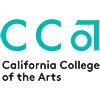
California College of the Arts (CCA) houses a cross-disciplinary Illustration BFA that features studio projects and visits; access to state-of-the-art production facilities and labs; a professional practice course that teaches students how to start and run a freelance or small business; lectures; and frequent classroom critiques (individual and group).
With an emphasis on drawing and painting, this 120 credit-hour program also explores emerging animation, AR/VR, storytelling, 3D modeling, imaging technologies, screenprinting, and hand-lettering. All CCA students will complete the First Year Experience (FYE), where they have the opportunity to participate in studio projects, discussion, and group critiques for two semesters.
After completing the FYE, students will begin taking courses to fulfill core, studio, major, and other requirements. All courses are led by professional Illustrators, Designers, and Fine Artists. Course examples include Illustration Studios 1-3; Painting Workshop; Drawing 2D, 3D, 4D; Digital Media; Illustration Tools; Writing 1-2; Media History: History of Illustration; and Professional Practice.
For students looking to enhance the BFA, the program provides the opportunity to minor in Comics or Visual Development. Comics minors are prepared for careers in book and editorial illustration and Visual Development students are prepared for positions such as storyboard artist, character designer, or environment designer for the entertainment industry.
During the last year of the CCA Illustration BFA program, students will complete a semester-long thesis project and participate in the Senior Show. This culminating event attracts local design professionals and artists from across the U.S.
Graduates of the Illustration BFA program at California College of the Arts can pursue careers in areas such as traditional publishing (book illustration, editorial illustration); animation and game design; film and television; advertising and marketing; exhibition design and installations; comics; graphic design; science and medicine (medical and scientific illustration); architecture; retail; and education.
Potential job titles include Illustrator, Storyboard Artist, Concept Artist, Exhibition Designer, Graphic Novelist, Textile Designer, Printmaker, Freelance Illustrator, Muralist, Surface Designer, Fine Artist, and Educator.
California College of the Arts was established in 1907 as the School of the California Guild of Arts and Crafts. When it opened, CCA had just three teachers and 43 students when it opened. Today, the school employs 420 faculty members that serve approximately 1,500 students enrolled in over 40 undergraduate, graduate, minor, and dual degree programs. California College of the Arts is accredited by the WASC Senior College and University Commission (WSCUC), the National Association of Schools of Art and Design (NASAD), and the National Architectural Accrediting Board (NAAB).
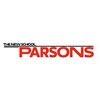
The New School’s Parsons School of Design (Parsons) is home to the School of Art, Media, & Technology (AMT), which has an Illustration BFA program that takes four years to complete, full-time. Students have the opportunity to create an interdisciplinary path of study, which can include adding a minor such as Comics and Graphic Narrative or Immersive Storytelling, or enrolling in a dual BA/BFA.
Other program features include internships with Parsons partners such as Nickelodeon, The New York Times, Barnes & Noble, and Apple; access to The New School libraries, studios, computer labs, archives, and the state-of-the-art Making Center; Collaboration Studio courses and other collaborative projects; participation in events such as Comic Arts Brooklyn, MoCCA Fest, and Pictoplasma; and study abroad opportunities in Paris, Florence, and London.
The Illustration BFA program at Parsons also provides access to New York–based professional organizations such as American Illustration and the Society of Illustrators, which helps students connect with professional illustrators, other artists, and publishers.
Consisting of 120 credit hours, the Parsons Illustration BFA begins with the First Year Curriculum (FYC) requirement, which explores art and design concepts, 2D and 3D processes, digital design, drawing, and critical practices. FYC course examples include Integrative Studio; Drawing/Imaging; Time; Objects as History; Space/Materiality; Integrative Seminar; and Sustainable Systems. Other course examples include Language & Letterform; Core Studio 4D; History of Modern & Contemporary Art: Recitation; Introduction to Visual Culture: Lecture; Topics Studio; and Professional Practices.
The Illustration BFA program at Parsons School of Design culminates with the Thesis Project, completed over two courses. Graduates are prepared for positions in illustration, publishing, comics, animation, installation design, toy design, advertising, game art, motion graphics, graphic novels, product design, fine art, and surface design. Program alumni have been hired by companies and organizations such as Rockstar Games, The New York Times, Urban Outfitters, Viking Books, LAIKA, Tiffany & Company, The Society of Illustrators, Amplify, Manhattan Youth, Curriculum Concepts, Brooklyn Print House, and Vice Media.
The New School was founded in 1919. Parsons School of Design was established as The Chase School in 1896 by American Impressionist William Merritt Chase. In 1904 Frank Alvah Parsons joined the school, eventually becoming its sole director. The Chase School became Parsons in 1941, and joined The New School in 1970. Today, The New School serves 10,000 students, with 5,000+ enrolled in Parsons School of Design.
The New School provides more than 120 degree and diploma programs across six colleges and schools, including Parsons Paris. The New School is accredited by the Middle States Commission on Higher Education (MSCHE), with Parsons School of Design included within the scope of MSCHE accreditation.
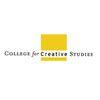
The Illustration Department at the College for Creative Studies (CCS) has programs leading to a BFA or a minor. The BFA requires 126-127 credit hours including 78 in studio areas, 42-43 in general studies courses, and six in general elective courses. The Illustration minor consists of 15 credits chosen from courses in the BFA program. Examples include Figure Illustration I-II; Illustration Techniques; and Anatomical Figure Illustration. Electives allow students in the minor to focus in a specific area of illustration.
During the first year of the CCS Illustration BFA, students will take courses in the Foundation Department. Areas of exploration during the year include Drawing, 2D and 3D Design, and Digital Tools. Students will also take courses in the Liberal Arts Department.
A major component of the CCS Illustration BFA is the opportunity to select a Pathway. Each Pathway allows students to create a focused portfolio for studio-based or freelance careers in Illustration. Pathway options include Publishing; Comics and Sequential; Visual Development; Gallery Artist; and Fashion, Lifestyle, and Licensing. An additional option is the Entrepreneurial Studies concentration, which is ideal for students who would like to launch their own studios.
Another major component of the Illustration BFA program at College for Creative Studies is the internship program. Through this experiential learning opportunity, upper division students will work with top brands, studios, corporations, and museums. Examples include Disney Consumer Products, Insomniac Games, Mattel Inc., Reader’s Digest, Cartoon Network, Converse, Hasbro, Crispin Porter + Bogusky, the Museum of American Illustration, Ball Aerospace, Diane von Furstenberg, Fisher Price, HoMedics, Museum of American Illustration, Anthropologie, Moosejaw, Museum of Fine Art, Grand Rapids Symphony, FOX News, and Spark Communications.
Full-time CCA Illustration BFA students will complete at least six academic hours and 24 studio hours each week to graduate from the program. Graduates have gone on to work with major companies, publishers, studios, and brands such as Disney, Blizzard Entertainment, Adidas, The New York Times, Cartoon Network, ESPN, Nike, Converse, Washington Post, and Ford.
Founded in 1906 as the Detroit Society of Arts and Crafts, College for Creative Studies is a private, nonprofit institution that serves more than 1,400 students enrolled in 23 Art and Design programs at both the undergraduate and graduate levels. CCS is accredited by the Higher Learning Commission (HLC). The school is also an accredited institutional member of the National Association of Schools of Art and Design (NASAD).
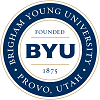
The College of Fine Arts and Communications (CFAC) at Brigham Young University (BYU) provides a number of opportunities and experiences for all CFAC majors. Serving nearly 5,700 students, the CFAC hosts hundreds of performances, faculty presentations, and student events each year. CFAC students also have opportunities to engage in research projects; participate in experiential learning activities in the U.S. and abroad; exhibit at Brigham Young University Museum of Art (MOA); and pursue a professional internship.
BYU’s College of Fine Arts and Communications also houses the Department of Design. Within the Department is an Illustration BFA program that accepts just 40 students per academic year. This Limited Enrollment Program (LEP) requires 120 credit hours, with 72 credits in the major. Courses are led by industry professionals with years of experience in their respective fields.
Course examples for the program include 3D Digital Illustration; Narrative Illustration; Environment Design; Survey of Illustration History; Game Design; Analog Motion; Character Design; Sketchbook; Directed Studies in Illustration; Basic Storyboarding; Marketing Management; and Career Strategies.
In the final year of the BYU Illustration BFA program, students will complete Senior Illustration Studio 1; BFA Illustration Capstone Project: Research, and BFA Illustration Capstone Project: Implementation.
Graduates of the Illustration BFA program at Brigham Young University work in a wide variety of fields such as publishing, exhibition design, medical and scientific illustration, advertising, entertainment, architecture, mural production, and fashion design. Some program alumni have gone on to launch their own studios and freelance businesses.
Brigham Young University was founded as Brigham Young Academy (BYA) in 1875 by Church of Jesus Christ of Latter-day Saints President Brigham Young. With more than 35,000 students from 105 countries, BYU is the one of the largest private universities in the U.S. The school provides approximately 435 programs across more than a dozen colleges and departments. Campuses include BYU-Utah, BYU-Idaho, BYU-Hawaii, BYU Pathway Worldwide, and Ensign College.
Brigham Young University is accredited by the Northwest Commission on Colleges and Universities (NWCCU).
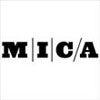
Maryland Institute College of Art (MICA) has several paths to study Illustration. For artists seeking an undergraduate degree, MICA has an Illustration BFA with Preproduction and Sequential Art tracks. At the graduate level, students can choose between the Illustration MA and the Illustration Practice MFA.
Students in the Illustration BFA program will complete the First Year Experience (FYE) consisting of 18 credit hours. FYE course examples include Drawing: Tradition and Innovation; Form & Face; and Systems & Time. In addition to other required courses such as Sophomore Illustration I-II; Junior Illustration I-II; and Senior Illustration I-II, BFA students may add a Studio concentration in an area such as Book Arts, Animation, Graphic Design, or Printmaking.
In addition to concentration options, all BFA students benefit from MICA’s relationships with organizations such as Baltimore Comic-Con, the Toronto Comics Art Festival, the Museum of Comics and Cartoon Arts, and the Small Press Expo.
During the final year of the program, MICA BFA students will develop a professional portfolio, while exploring topics such as business practices, intellectual property, and copyright issues.
Graduates of the MICA Illustration BFA program have been hired for internships, full-time positions, and freelance assignments at places such as DC Comics, DreamWorks Animation, Johns Hopkins Institute of Nanobiology, National Geographic, LucasArts Entertainment, Pixar, Google, Anthropologie, Apple, The New York Times, and Whole Foods Market. Some Illustration graduates go on to launch their own studios, while others have enrolled in MICA’s Illustration MA or Illustration Practice MFA programs.
The MICA Illustration MA is a one-year program for practicing Illustrators seeking career advancement or individuals interested in launching a career in illustration. Consisting of studios, lectures, workshops, and open electives, the 30 credit hour MA features collaborative projects with the Center for Design Thinking and graduate students from other departments at MICA; learning that takes place in a state-of-the-art studio environment; an open-plan; and courses taught by leaders in the field.
The Illustration MA program at MICA culminates with a capstone portfolio project, exhibition, and review panel.
The Illustration Practice MFA is a 60 credit-hour program that features opportunities to collaborate with MICA’s Dolphin Press & Print; Rockwell Center for American Visual Studies; the Modern Graphics History Library at Washington University; and the Center for Design Thinking at MICA. Students in this two-year program will also collaborate with other industry professionals and peers. All Illustration Practice MFA students have the opportunity to communicate with visiting critics and artists-in-residence. The MICA Illustration Practice MFA culminates with the MFA Thesis.
Graduates of the Illustration MA and MFA programs at Maryland Institute College of Art work in leadership positions such as Senior Illustrator, Managing Illustrator, Art Director, Program Director, Design Manager, Creative Director, Educator, Gallery Manager, Exhibiting Artist, and Curator. Program alumni have also gone on to launch their own studios and freelance businesses.
Founded in 1826, Maryland Institute College of Art is the nation’s oldest independent, continuously degree-granting college of art and design. The school serves nearly 3,500 undergraduate, graduate, and open studies students from 49 states and 52 countries. Programs at MICA lead to a BFA, MA, MFA, MBA, MPS degree, or post-baccalaureate certificate. Maryland Institute College of Art is accredited by the Middle States Commission on Higher Education (MSCHE) and the National Association of Schools of Art and Design (NASAD).

Minneapolis College of Art and Design (MCAD) has an Illustration BFA program that emphasizes collaboration across all majors. Consisting of 120 credit hours, the program also provides hands-on coursework with the opportunity to focus in any area within Illustration. Examples include children’s book illustration, illustration for entertainment (animation and games), product illustration, advertising illustration, editorial illustration, comic book illustration, surface design, and courtroom illustration.
Course examples for the program include Introduction to Illustration; Photography, The Moving Image, and Digital Culture; Digital Illustration; Ideation and Process; Tools of the Trade; Illustration Topics; Editorial Illustration; Illustration and Products; Applied Arts and Designed Objects; and Professional Practice: Illustration. In this course, students have opportunities to work on projects such as textbook illustrations, promotional materials and art for ad campaigns, and posters for nonprofit clients.
Other program features include the option to select a minor in an area such as Animation, Advertising, or Graphic Design; internship opportunities at local and national studios; and participation in the MCAD study abroad program. In partnership with the Association of Independent Colleges of Art and Design (AICAD) Exchange Program, MCAD study abroad experiences take place at AICAD schools in Canada, the UK, China, and Singapore.
The Illustration BFA program at Minneapolis College of Art and Design culminates with the Senior Project: Illustration course worth six credits. For this final project, students may complete a research project, solve an in-depth illustration problem, or demonstrate advancements in a specific strength or style.
Graduates of the Art and Design programs at Minneapolis College of Art and Design enjoy a 93% employment rate, with nearly 60% of all graduates landing positions in their respective fields. MCAD alumni are Fine Artists, Children’s Book Illustrators, Editorial Illustrators, Comic Illustrators, Advertising Illustrators, Concept Artists, Fashion Illustrators, Courtroom Illustrators, Medical and Technical Illustrators, and Surface Designers.
Minneapolis College of Art and Design was established in 1886 by the Minneapolis Society of Fine Arts. The school serves approximately 800 students from 40 states and 13 countries. Programs include 14 undergraduate majors leading to a BFA or BS, three MA degrees, one MFA degree, and seven professional development certificate options. Minneapolis College of Art and Design is accredited by the National Association of Schools of Art and Design (NASAD) and the Higher Learning Commission (HLC). The school is also affiliated with the Association of Independent Colleges of Art and Design (AICAD).
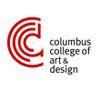
Columbus College of Art and Design (CCAD) has an Illustration BFA program that gives all students the opportunity to work on the student publication Spitball: A CCAD Comics Anthology. As part of the Comics Anthology Practicum course, which simulates a professional comic publishing practice, students will work on the design, merchandising, and sale of the publication in collaboration with professional comic writers and artists.
CCAD Illustration BFA students also have the opportunity to and interact with storytellers, animators, comic artists, and professional writers through Cartoon Crossroads Columbus. Highlights include workshops, lectures, professional panels, and more. Other program features include access to state-of-the art facilities such as 2D and 3D illustration labs, the FabLab, and computer lab; opportunities to specialize in a creative area through a minor or concentration; and internship opportunities at businesses in Ohio and across the U.S.
CCAD minors are 15 credit hours and concentrations are nine credit hours. Minor examples include Comics & Narrative Practice; Animation 2D or 3D; Film & Video; Advertising & Graphic Design; Photography; Copywriting; Design Research; Industrial Design; and Business. An Illustration minor is also available for students in other majors. Concentration examples include Illustration/Entertainment; and Illustration/Illustrative Design.
Consisting of 120 credit hours, the Illustration BFA highlights courses such as Motion Illustration; Traditional Media Illustration; Character and Environment Design; Historical Art & Design; Digital Design Lab; Illustration Markets; and Illustration Self-Promotion. The Illustration BFA program at Columbus College of Art and Design culminates with the Illustration Capstone. Graduates are prepared to pursue careers across industries.
Program alumni have been hired at places such as DreamWorks Animation, Marvel Comics, Boeing, Disney Consumer Products (DCP), Sony Pictures, DC Comics, The Wall Street Journal, Hasbro, Cartoon Network, Bath & Body Works, Williams Sonoma, Ogilvy & Mather, Hallmark, Pixar, CBS News, forever 21, and American Greetings.
Columbus College of Art & Design was established in 1879 by five women. The school serves approximately 1,010 undergraduate and graduate students from 36 states and 14 countries. CCAD provides 11 undergraduate majors, 18 minors, and three graduate programs across 10+ departments.
Columbus College of Art & Design is accredited by the Higher Learning Commission (HLC) and the National Association of Schools of Art and Design (NASAD). CCAD is also affiliated with the Association of Independent Colleges of Art and Design (AICAD).

Otis College of Art and Design (OTIS) has an Illustration BFA program that prepares students for careers such as storyboard artist, illustrator for animation, children’s book illustrator, motion graphic artist, art director, and muralist. Housed in the Communication Arts Department, the program allows students to focus in one or more areas through more than a dozen minor options. Examples include Digital Media, Product Design, Book Arts, Advertising Design, Printmaking, Community Arts Engagement, and Entrepreneurship.
Other BFA program features include access to state-of-the-art facilities and labs; internship and study abroad opportunities; participation in conventions, field trips, workshops, and student exhibitions; and visiting lecturers and artists
The Illustration BFA at Otis College of Art and Desing consists of 120 credit hours. Course examples include History of Graphic Design and Illustration; Illustration I-IV; Alternative Materials and Processes for Illustrators; Drawing and Painting I-II; Creative Action Lecture; and Typography for Illustrators.
In the final year of the program, students will complete several upper division studio electives, Entrepreneur 101, and a final project through several seminar and project courses.
Graduates of the Illustration BFA program at OTIS are prepared for careers across industries. Program alumni have been hired at places such as Disney, Apple, Netflix, Mattel, Young & Rubicam LA Weekly, Nike, Sony Music, WB Network, Hurley International, Conde Nast Publications, Los Angeles County Museum of Art, Von Dutch, Hallmark, Twentieth Century Fox, GUESS, Ogilvy Worldwide, Target, Quicksilver, and Davis Elen Advertising.
Established in 1918, Otis College of Art and Design is Los Angeles’ oldest professional school of the arts. This private, non-profit college serves more than 1,200 students enrolled in 11 BFA and MFA degree programs in the Fine Arts, Graphic Design, Public Practice, and Writing. A variety of minors and certificate programs are also available. Programs and courses at OTIS are led by more than 430 professors—all active professionals in their respective fields.
Otis College of Art and Design is accredited by the WASC Senior College and University Commission (WSCUC) and the National Association of Schools of Art and Design (NASAD). OTIS is also a member of the Association of Independent Colleges of Art and Design (AICAD) and the Partnership for Academic Leadership on Sustainability (PALS).
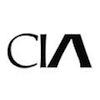
The Illustration program at Cleveland Institute of Art (CIA) provides real world experiences through partnerships with external clients—all before graduation. CIA Illustration students also benefit from field trips to advertising agencies and professional studios; interactions with visiting artists; small-group seminars; private, individual studio spaces; and access to Integrated Media Environment Facilities, lighting and shooting spaces, a sound recording studio, and fabrication studios.
Illustration at Cleveland Institute of Art consists of two paths: the Illustration BFA and the Life Sciences Illustration BFA. Both programs explore traditional materials and techniques such as acrylics, oils, inks, collage, and pencils. Students will also master industry standard software such as Illustrator and Adobe Photoshop.
Consisting of 120 credit hours of study, the Illustration BFA features courses such Layout Rendering Techniques; Illustration I-II; Character Design + Development; Graphic Novels + Sequential Art; Picture Book Illustration; Visual Concepts in Illustration; Sound Design Fundamentals; Illustration: Advanced Illustration Studio Projects; and Professional Practices: Entrepreneurial Ventures.
The Illustration BFA program at Cleveland Institute of Art culminates with the BFA Thesis and Exhibition. Graduates of the program are prepared for carers in areas such as Book and Magazine Publishing, Entertainment, Animation, Game Design, Comic Book Publishing, and Advertising.
The Life Sciences Illustration BFA program at Cleveland Institute of Art is designed for artists seeking a program that integrates Art and Science. One of the few BFA degrees of its kind in the U.S. the Life Sciences program explores topics such as Information Design, Illustration, Interactive Design, Botanical Sciences, Serious Game Design, Animation, Zoological Sciences, Sound Design, Biological Sciences, Research Methods, and Professional Development.
Course examples for the program include Interactive Narratives; Advanced Concepts & Methods; Digital Biomedical Illustration; Digital Color: Style + Representation in Science; Line: Information Visualization; Veterinary Illustration; 3D Animation; Natural Science & Zoological Illustration; 3D Modeling; Cellular + Molecular Illustration; and Anatomy for the Artist.
A major component of the CIA Life Sciences Illustration BFA program is the internship, which provides the opportunity to gain valuable real-world experience in this unique field. Professional Practices courses provide additional insight into how the industry works and how to gain entry. The courses highlight portfolio development for online and offline media, demo reels, and professional packages consisting of business cards, resumes, cover letters, etc. Courses include Professional Practices: Studio to Gallery; and Professional Practices: Industry.
The Life Sciences Illustration BFA program at Cleveland Institute of Art culminates with the BFA Thesis and Exhibition. Program alumni hold titles such as Illustrator, Biomedical Illustrator, 3D Animation Artist, 3D Designer, Art Director, Forensic Illustrator, Scientific Illustrator, Medical Illustrator, and Educator.
Cleveland Institute of Art was chartered as the Western Reserve School of Design for Women in 1882. This independent, not-for-profit college serves around 600 students enrolled in 13 entertainment arts, design, fine arts, and craft majors. Cleveland Institute of Art is accredited by the National Association of Schools of Art and Design (NASAD) and the Higher Learning Commission (HLC).
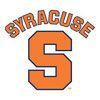
Syracuse University (SU) is home to the College of Visual and Performing Arts (VPA), which houses the School of Art. Within the school is an Illustration program with BFA and MFA options. BFA students have the opportunity to focus in one or more of the following areas: Editorial, Visual Development, Product, and Sequential. The Editorial Focus is for students who would like to specialize in illustrating for magazines, book covers, newspapers, and online publishing.
Visual Development is designed for students with an interest in character development for gaming and animation. In the Product Focus, students will explore illustrating as it relates to packaging, patterning, and products. Students in the Sequential Focus will learn to illustrate for comics, graphic novels, and children’s books.
Other Illustration BFA program benefits include a two-week animation and film industry immersion in LA; participation in on-campus workshops and lectures; access to state-of-the-art production facilities, labs, and studios; participation in the SU internship program; and the opportunity to study overseas through the VPA study abroad program in Italy, or through Syracuse SU Study Abroad. More than 100 programs are accessible across 60 countries.
The SU Illustration BFA program requires 122 credit hours of study. Students will take courses such as Illustration I-II; Media Arts Techniques I-II; Introduction to Digital Illustration; Observational Drawing Workshop; Intermediate Illustration I-II; and The Business of Illustration. In addition to one or more focus areas, BFA students may complete 18 credits of studio electives. The program culminates with the Senior Portfolio, completed across two courses.
Graduates of the Illustration BFA program at Syracuse University are prepared to pursue roles across many creative industries. Program alumni work in children’s book publishing, visual development for games, editorial illustration, graphic novels and comics, animated films, licensing, advertising, and marketing, greeting card design, and television production.
The Illustration MFA at Syracuse University is an experimental, cross-disciplinary, and research-focused program that provides opportunities to interact with professionals at New York studios and within the arts and publishing industries. Consisting of 60 credit hours, the program includes 27 credits of studio electives. Other electives, such as elective travel courses, allow students to take an intensive three-credit course for four hours Monday through Friday during the two-week long MAYmester and the Summer Program.
Course examples for the program include Story Lab; Play Matters; Visual Integration; Visual Voice I-II; and Entrepreneur. The culminating experience for the SU Illustration MFA is the 12 credit-hour Thesis. Graduates are prepared for advancement opportunities in their current careers, and for leadership positions in fields such as comic book publishing, film and animation, game design, advertising and marketing, magazine and newspaper publishing, book publishing, medical and scientific illustration, fine art, product and toy design, and education.
Founded in 1870, Syracuse University is an R1 research university that serves approximately 22,700 students from all 50 states and 120 countries. More than 200 majors, 100 minors, and 200 advanced degree programs are provided across 13 colleges and schools. In addition to campuses in Syracuse, Manhattan, Washington DC, and Los Angeles, Syracuse University operates overseas centers in France, Italy, London, Poland, Chile, and Spain. Syracuse University is accredited by the Middle States Commission on Higher Education (MSCHE).

Kansas City Art Institute (KCAI) is home to the Department of Illustration. One of the school’s largest and fastest growing departments, the Department of Illustration has a BFA program with a required internship with potential employer’s such as Nelson-Atkins Museum of Art, Porter Teleo Design Firm, The Kansas City Star, The American Jazz Museum, and Boulevard Brewing Company.
Students also have access to 21,500 square feet of studios, including the new Tony Jones Studios, that provide the opportunity to learn and work in a professional environment. Through MICRO—KCAI’s in-house agency, students can also gain hands-on experience working on projects with partner brands such as the Kansas City Royals and Children’s Mercy Hospital.
All programs at Kansas City Art Institute begin with the KCAI Foundation Program. This immersive experience lasts a full year and includes dedicated industrial studios and independent work and storage spaces; collaborative programs, projects, and workshops; training in the Print Center (digital design and output), Beals Studios (digital fabrication), and Central Shop (woodworking); faculty mentors; and 16 contact hours of studio per week.
During the first-year program, students will also participate in the Foundation Seminar, which provides the opportunity to interact with activists, artists, and KCAI alumni. Upon completion of the first year, BFA students may move on to second year requirements or declare a double major in Illustration and Art History or Illustration and Creative Writing.
All KCAI Illustration students will explore storytelling; 2D and 3D; and traditional and digital media while creating children’s books, video games, comic books, and editorial magazines. Course examples for the program include Organic Perceptions; Paper and Ink; Exploring the Narrative; Analytical Drawing Systems; Covers and Pages; Storytellers-Myth Makers; Graphic Form for Illustrators; Cultural Safari; Conceptual Problem Solving; and US (Collaboration, Teamwork and Flexibility).
In the final year of the program, students will complete Illustration in Action: Networking & Exhibition, and Professional Practice: The Business of Illustration. The KCAI Illustration BFA program culminates with a thesis completed over two courses: Image Thesis I and II.
Graduates of the Illustration BFA program at Kansas City Art Institute have won awards presented by publications such as Print, Communication Arts, The Society of Illustrators, and American Illustration.
Program alumni work has been featured in children’s books and in publications such as Wired, The New York Times, Step-Inside-Design, and Women’s Day. Illustration BFA graduates have also been hired in a variety of roles by industry leaders such as Nickelodeon, American Greetings, MTV, Nike, and Hallmark.
Kansas City Art Institute was established in 1885 as a Sketch Club. Situated just steps from the Nelson-Atkins Museum of Art within Kansas City’s arts corridor, this four-year art and design college serves more than 700 students enrolled in 13 majors across 15 program areas. Kansas City Art Institute is accredited by the Higher Learning Commission (HLC) and the National Association of Schools of Art and Design (NASAD).

The Sam Fox School of Design and Visual Arts at Washington University in St. Louis (WashU) was established in 2006. Within the school are the College of Art, Mildred Lane Kemper Art Museum, and the College of Architecture. Programs for Illustrators are part of the College of Art and include BA and BFA degrees in Studio Art & Design with a major in Communication Design, and the Illustration + Visual Culture MFA (MFA-IVC). Communication Design students may select the 15-unit Design minor or move between illustration, drawing, book arts, interaction design, and more to match their goals.
The minor has a mix and match component that allows students to select courses in Illustration, Communication, the Illustrated Book Studio, and Fashion Design. Communication Design students may select as many illustration courses as they desire. Course examples include Illustration as Practice; Applied Illustration; Animated Worlds; Image and Meaning; Panel by Panel: Narrative Comics; Semiotics Studio: Designing Signs and Symbols; Literatures of Drawing; and The Illustrator’s Sketchbook.
The Communication Design BFA begins with the First Year Experience, which consists of core studios such as 2D Design, digital studio, and drawing. Students will also attend a weekly seminar. All studios are taught in teams by communication design and studio art faculty, and mentored by a dedicated academic advisor. In the second and third years of the BFA program, students will take advanced courses and select their own major courses.
The WashU Communication Design BFA culminates with a Capstone project. For this final project, students have created comics, illustrated books, graphic novels, screen-based art, zines, and digital experiences. Capstones are displayed in a public exhibition and reviewed by art and design professionals.
The Illustration + Visual Culture MFA is a two-year, fully residential program that consists of 50% Illustration studio work, 20% Visual Culture, History & Theory, 15-20% hands-on archive work, and 10-15% electives. Housed in the Roxanne H. Frank Design Studio (the Roxy), the MFA-IVC provides each student with their own studio space and access to state-of-the-art equipment and software, study areas, and group critique sessions.
Electives for the program allow students to focus in specific areas of art, design, and entertainment. Elective examples include Narrative Comics; Book Arts; Illustration Concepts and Media; Branding and Identity; Image & Story; Painting; Animated Worlds; The Illustrator’s Sketchbook; Game Design; Visual Culture; Applied Illustration; Type and Image: Experiments on Press; Printmaking; Typography; and Art History.
Consisting of 60 credit hours, the MFA-IVC program at WashU requires courses such as Illustration Studio 1: Drawing & Voice; Comics & Cartooning: A Critical Survey; The Illustrated Periodical; Special Collections: Exhibitions & Engagement; Readings in Visual & Material Culture; Special Collections: Research Methods; and Graduate Drawing Studio. All MFA-IVC students will complete an internship and two final Thesis courses including Thesis Studio 1: Drawing & Voice, and Thesis Studio 2.
Graduates of the MFA-IVC program at the WashU’s Sam Fox School are prepared for to pursue roles such as author-artists of picture books, graphic novels, and comics; creative directors; illustration professors; curatorial staff in libraries, auction houses and museums; and critical writer’s on popular culture.
Founded in 1853, Washington University in St. Louis serves approximately 15,220 students enrolled in more than 300 academic programs across seven schools and the Colleges of Arts and Sciences; Architecture; and Art. The Sam Fox School of Design & Visual Arts was founded in 2006 after the merging of the academic units of Architecture and Art, and the Washington University in St. Louis Museum. Washington University in St. Louis has been accredited by the Higher Learning Commission (HLC) since 1913.
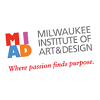
Milwaukee Institute of Art and Design (MIAD) has an Illustration BFA program that prepares students for roles such as Illustrator, Designer, or Art Director. The program accomplishes this through features such as the Seminar Series, which provides the opportunity for students to interact one-on-one with outside professionals from all areas within the field.
Illustration BFA students also benefit from access to MIAD’s new Illustration studios, classrooms, and the Emerging Technology Center; portfolio development courses; internships at local and regional companies and studios; and participation in semester-long study abroad experiences.
Consisting of 120 credit hours, the MIAD Illustration BFA program begins with the First Year Experience (FYE). Each semester in the FYE consists of 15 required credits including major courses and beginning liberal studies. Course examples include Process of Inquiry; Introduction to the Practice of Art & Design History; Systems Drawing; Digital 2D; Visual Language; Intro to Advanced Study; and Digital 4D.
Upon completion of the FYE, students will take courses such as Illustration I-IV; Advanced Figure Drawing for Illustrators; Illustration Media; History of Illustration and Communication Design Since 1850; Advanced 2D Digital; Patterns in Nature; Typography; and The Creative Professional in Context.
BFA students may also add a minor to enhance the degree. Popular options include Book Arts, Writing, Digital Media Production, Copywriting, Advertising, Arts Management, and Business.
The Illustration BFA program at Milwaukee Institute of Art and Design culminates with the Illustration Thesis Project, Portfolio, and MIAD Exhibition. Students are required to be actively involved in the overall preparation of the Exhibition including signage, lighting crew, gallery monitoring, painting crew, etc.
Graduates of the MIAD Illustration BFA program are prepared to pursue positions in children’s book publishing, editorial, graphic design, comics, advertising and marketing, architecture, exhibit design, animation, game design, forensic illustration, textile design, medical illustration, storyboard art, new media, and fashion illustration.
BFA program alumni have been hired at places such as Hallmark, Kohl’s Corporate, Harley-Davidson, Kohler, Estee Lauder, Hanson Dodge Creative, Rockwell Automation, Kimberly Clark, Milwaukee Public Television, Santa Fe communications, and Milwaukee Repertory Theater. Graduates have also gone o to launch tier own studios such as THIEL Design and Studio8Design.
Founded in 1974, Milwaukee Institute of Art and Design serves 900 degree-seeking students, 600 pre-college students, and 250 outreach/special programs students. For degree-seeking students, MIAD provides seven degree programs, five studio minors, and nine liberal studies minors. The school’s affiliation with Marquette University provides access to additional courses in Humanities and Sciences, and other resources.
Milwaukee Institute of Art and Design is a member of the Association of Independent Colleges of Art and Design (AICAD)—a consortium of 39 leading art schools in the United States and Canada. The school is accredited by the National Association of Schools of Art & Design (NASAD) and the Higher Learning Commission (HLC).

Academy of Art University (Academy of Art) is home to the School of Illustration, which provides programs leading to a certificate, AA, BFA, MA or MFA. Across programs, students will explore traditional and emerging techniques in drawing, storytelling, and composition. All School of Illustration students have access to drawing rooms and workshops; computer labs equipped with digital workstations; new media technology and software; and a live model drawing studio.
Other program features include the option to complete the degree options entirely online; opportunities to collaborate on projects with faculty and peers; collaborations outside of the classroom with professional artists and designers; interactions with guest speakers and lecturers; study abroad experiences in Florence, Italy; and the opportunity to complete a professional internship.
School of Illustration students also have the opportunity to work with WRiTE BRAiN BOOKS, which produces illustrated, textless books designed to help kid’s self-author their own books.
Across programs, students will take courses such as Digital Painting; Process and Illustration; Children’s Book Illustration; Vector Illustration and Motion; Perspective for Characters and Environment; 150 Years of American Illustration; Concept, Technique and Illustration; Concept, Technique and Illustration; The Rendered Figure; Editorial Illustration; Graphic Novel/Comic Book; Digital Media: Digital Manipulation; Character Design for Visual Development (ZBrush); Clothed Figure Drawing; and Chiaroscuro.
The Illustration program at Academy of Art also features projects and coursework that focus on preparing students to enter the job market or launch their own businesses. Examples include Designing Careers; Surface Design and Licensing; Professional Practices for Illustrators; Collaborative Project: The Agency; Blogging: Content Creation & Promotion; Advanced Art Licensing & Portfolio Building; and Portfolio Preparation and Self Promotion.
Graduates of the Illustration programs at Academy of Art University are prepared to pursue roles across industries. Program alumni are Children’s Book Illustrators, Book Cover Artists, Interactive Illustrators, Storyboard Artists, Medical and Scientific Illustrators, Concept Artists, Reportage Illustrators, Comics Artists, and Freelance Illustrators. Examples of companies that have hired Academy of Art Illustration alumni include Marvel Comics, Penguin Publishing Group, Wired, The New York Times, National Geographic, Chronicle Books, and The Atlantic.
Established in 1929, Academy of Art University is a family-owned private university that serves more than 7,000 students enrolled in over 120 degree programs across 40+ areas of study. Programs lead to the AA, BA, BFA, BS, B. Arch, MAT, MA, MFA, and M. Arch degrees.
One of the nation’s largest private, accredited art and design schools, Academy of Art houses 22 schools that emphasize internships, study abroad experiences, participation in clubs, and collaborative, civic, and pro bono projects. Academy of Art University is accredited by WASC Senior College and University Commission (WSCUC).

Pacific Northwest College of Art (PNCA) at Willamette University has an Illustration BFA program that explores traditional studio media and emerging technologies. During the first year of the program, all students will complete liberal arts, art history, and foundation studio courses, as well as one studio elective and First Year Seminar. In the second and third years, students will complete courses such as Digital Media Strategies; Painting for Illustration; Design & Image; Drawing for Illustration; and Cultural Masterpiece.
Other program features include access to state-of-the-art labs and studios such as the WACOM Lab, the Professional Digital Fine Art Printing Lab, Animation Lab, Printmaking Studio, and Photography Lab; internships with companies such as Nintendo, Microsoft, Nike, Dark Horse Comics, and Wieden+Kennedy; and access to Make+Think+Code, a technology lab that hosts workshops, classes, and additional facilities, digital tools, and technology.
All PNCA BFA students also benefit from mentorship programs; access to Albert Solheim Library, which houses more than 30,000 books and computer workstations; professional practices instruction; and portfolio preparation.
In the senior year of the Illustration BFA program at Willamette University/PNCA students will complete Illustration Advanced Studio I-II; Research for Creative Practice; and a thesis. Upon completion of the program, students will have the opportunity to present their work at PNCA’s Annual End-of-Year Showcase at a downtown Portland gallery.
Graduates are prepared to pursue titles such as Digital Illustrator, Children’s Book Illustrator, Comic Book Illustrator, Graphic Novelist, Storyboard Sketch Artist, Product Illustrator, Signage Developer, Game Artist, Logo Designer, Character Artist, Editorial Illustrator, Textile Designer, Architectural Illustrator, and Set Designer.
PNCA Illustration BFA alumni have worked with DC Comics, Disney, Google, The MET, The New Yorker, LA Times, NBC, The Washington Post, NPR, Crate and Barrel, the Portland Trailblazers, OLIPOP, Liquid Development, SuperGenius, and Dark Horse, among others.
Willamette University was established in 1842, making it the oldest university in the West. This liberal arts college serves approximately 1,870 students enrolled in dozens of programs across the College of Arts and Sciences, the College of Law, Pacific Northwest College of Art, and the Atkinson Graduate School of Management. Willamette University and PNCA merged in 2021.
PNCA, which remains an independent college within Willamette, was established in 1909. Serving around 650 students, the school provides 11 BFA degrees, 10, eight graduate degrees within the PNCA Hallie Ford School of Graduate Studies, and one post-baccalaureate program.
Willamette University and Pacific Northwest College of Art are accredited by the Northwest Commission on Colleges and Universities (NWCCU). PNCA is also a member of the Association of Independent Colleges of Art & Design (AICAD) and the National Association of Independent Colleges and Universities (NAICU).
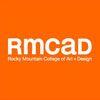
Rocky Mountain College of Art and Design (RMCAD) has several Illustration program options. Within the Illustration BFA program concentrations in Children’s Book and Sequential Art, and an emphasis in Concept Art. Students in this program also have the option to select the Illustration curriculum without an emphasis or concentration. In addition to the Illustration BFA, RMCAD has an Illustrative Design BFA that explores technology, design thinking, graphic design, and illustration.
The Illustration BFA consists of 123 credit hours, including 45 liberal arts credits and 24 foundations credits for each option. Children’s Book, Sequential Arts, and Illustration (no focus area) students will complete 48 credits in Illustration. Concept Art students will complete 36 Illustration credits. Illustration students (no focus area) will select six studio elective credits, while Children’s Book students will take six credits in the concentration. Sequential Arts requires six credits in the concentration, while Concept Art requires 15 credits in the emphasis and three studio elective credits.
Course examples across programs include 3D Design: Space + Materiality; Illustration I-III; Landscape Painting; Digital Illustration I-II; Sequential Art; Life Drawing I-IV; Children’s Book Illustration; Illustration Media; Character Design; Typography for Illustration; Topics in Illustration; and Illustration Marketing.
All RMCAD Illustration students benefit from small class sizes with individual instruction; access to industry standard software and facilities; and the opportunity to collaborate with professional Illustrators. Students will also have the opportunity to complete the Illustration Internship, worth three credits.
The Illustration BFA program at Rocky Mountain College of Art and Design culminates with the Illustration Graduation Portfolio, completed across two courses. Graduates are prepared to pursue titles such as Children’s Book Illustrator, Concept Artist for Games and Animation, Comic Book Illustrator, Technical Illustrator, Editorial Illustrator, Product Designer, Graphic Novelist, and Scientific or Medical Illustrator.
The Illustrative Design BFA at RMCAD is a hybrid degree that requires 123 credit hours. Students will complete 27 credits in Graphic Design, 21 credits in Illustration and nine credits in Illustrative Design. The remaining credits are in foundations, liberal arts, and art/design history. Course examples for the program include Vector Illustration; Raster Image Processing; Illustration I-III; Sequential Art; Visual Sequencing; Motion Design; Digital Illustration; Character Design; and Information Visualization.
Other program features include small class sizes with personalized instruction; year-round classes; hands-on training; a combination of online and on-campus coursework; and portfolio development. Classroom tools include Adobe Photoshop, InDesign, Illustrator, and After Effects.
The culminating experiences for the Illustrative Design BFA at Rocky Mountain College of Art and Design include the Senior Illustrative Design Seminar and the Illustrative Design Graduation Portfolio.
Graduates are prepared to pursue titles such as Illustrator, Graphic Designer, Motion Designer, Print Designer, Typographer, Information Designer, Package Designer, and Art Director.
Rocky Mountain College of Art and Design began in 1963 as Rocky Mountain School of Art. Serving more than 1,000 students, RMCAD offers 16 degree and certificate programs offered in campus/hybrid and online formats. Rocky Mountain College of Art and Design is accredited by the Higher Learning Commission (HLC) and it is an accredited institutional member of the National Association of Schools of Art and Design (NASAD).
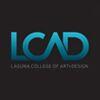
Laguna College of Art and Design (LCAD) has several paths to study Illustration. Options include a BFA in Illustration; a Drawing and Painting BFA with an Illustration emphasis; and a BFA in Graphic Design and Digital Media (GD+DM) with an Illustration emphasis. An Illustration minor is also available. This program requires 15 credit hours including Computer Imaging; Rendering; Illustration 1: Color; Illustration 2; and Graphic Illustration 1. Illustration minor students will complete several pieces for their professional portfolios.
All programs are led by industry professionals who have worked with major companies, studios, and brands such as Warner Bros., Sony, IBM, Pfizer, McDonald’s, Mitsubishi, Dannon, Houghton Mifflin Harcourt (HMH), and The United Nations. Other program features include hands-on design projects with LCAD partners such as Nike, Sony, and UCI; small class sizes; guest speakers; mentorship programs; and internship opportunities.
Students in the LCAD Illustration BFA program will take courses such as Pictorial Design for Illustration; Artistic Anatomy; Illustration 1-3; Graphic Novel; Words, Images, and Ideas; Digital Painting for Illustration; Computer Imaging; Illustrative Painting; Digital landscape Painting; and Professional Studies for Illustrators. The program culminates with the Senior Capstone and Thesis Defense course worth three credits.
Graduates are prepared for careers in book and comic book publishing; film, television, and animation; game art and design; product design; advertising and marketing; gallery art; newspaper and magazine publishing, architecture; medical and scientific illustration; and industrial design.
LCAD Illustration alumni have been hired at places such as DreamWorks Animation, Marvel Entertainment, Disney Interactive, Google, Microsoft Studios, Blizzard Entertainment, Obsidian Entertainment, Hurley, Opera New York, Quicksilver, KCET, Xist Publishing, High Moon Studios, and DC Shoes.
Housed in the Fine Arts Department, the Drawing and Painting BFA program at Laguna College of Art and Design focuses on experimentation. All students benefit from industry partnerships with Laguna Art Museum, South Park Studios, and MEAM Museo Europeo de Arte Moderno, as well as internship opportunities in the third year of the program. In the final year of the program, students are assigned to private studios and a mentor.
Students in the Drawing and Painting BFA program will take courses such as Experimental Drawing; Digital Photo for Fine Arts; Materials and Techniques; Intermediate Portraiture; and Scientific Anatomy. The Illustration emphasis explores traditional and mixed media art. Students will work on projects that focus on print, branding, murals, exhibition design, and more. In the Professional Practices course, students will learn about gallery operations, publications, and artist branding.
The Drawing and Painting BFA at LCAD culminates with the Senior Capstone and Thesis Defense course worth three credits.
The Graphic Design and Digital Media BFA at Laguna College of Art and Design is a multidisciplinary, 122 credit-hour program that explores traditional and emerging areas such as 3D, iPad development, package design, advertising, print, video, user experience and interfaces, action sport design, mobile apps, the web, virtual reality applications, and motion.
The Illustration emphasis for this program provides access to all Illustration courses, allowing students to select them as electives to match their goals. Students also have opportunities to work with industry partners such as Pixar, Nike, Saatchi & Saatchi, and SapientNitro; complete an internship; and develop a professional portfolio. The program culminates with a Senior Capstone and Thesis Defense.
Nearly 100% of recent Graphic Design and Digital Media graduates work in their chosen field, with most securing employment through LCAD prior to graduation. Program alumni have been hired at places such as Amazon, MGM, Google, Sony, Fox Entertainment, Pixar, Blizzard Entertainment, Disney Imagineering, Cartoon Network, Apple, Tesla, Saatchi & Saatchi, Riot Games, Disney Interactive, and Mattel.
Laguna College of Art and Design opened in 1961 as Laguna Beach School of Art (LBSA). The school has a main campus in Laguna Beach and educational affiliates locally and around the world including Florence Academy of Arts in Florence, Italy, Los Angeles Academy of Figurative Art, and NHTV Breda University of Applied Sciences (NHTV), Netherlands. Laguna College of Art and Design serves around 770 students with access to 15 degree options and nine minors. LCAD is regionally and nationally accredited by the WASC Senior College and University Commission (WSCUC) and the National Association of Schools of Art and Design (NASAD).

The School of Design at University of the Arts (UArts) serves around 200 students enrolled in six BFA programs and three minors. All School of Design students benefit from collaborative projects between majors; a Design internship at an individual artist studio or places such a Cartoon Network, Anthropologie, and Barnes & Noble; professional preparation course and activities; and access to the Albert M. Greenfield Makerspace and the Center for Immersive Media (CIM).
The Makerspace is a 3,500-square-foot digital and fabrication studio outfitted with state-of-the-art equipment such as 3D printers and scanners, laser cutters, and printed circuit board (PCB) printers.
At 5,600 square feet, the CIM is the largest space of its kind in the region. The facility houses an optical motion-capture system, a 16-station computing classroom with PCs optimized for real-time computer graphics rendering, two large project rooms, a four-channel audio system, video projectors, and lighting instruments with adjustable color and zoom. In the CIM, students can explore augmented and virtual reality (AR/VR), human-computer interaction (HCI), and performance motion capture.
The School of Design also provides an Illustration BFA and a minor in Figurative Illustration. Consisting of 15 credit hours, the Figurative Illustration minor requires Illustration I: Pictorial Foundation; Illustration II: Illustration Methods; Figure Anatomy; and Responsive Drawing. For the remaining credits, students may take Figure Communication or Figure Painting. Like all UArts minors, the Figurative Illustration minor is open to all students.
The UArts Illustration BFA is a 120 credit hour program that provides intense training using the latest industry software including InDesign, Illustrator, Adobe Photoshop, and After Effects. All students will complete the School of Design Core—a distinctive first-year experience with course modules in the Makerspace and CIM. Examples of areas covered include visual communication, design technology, design thinking, and team building.
Illustration BFA students will complete 61.5-63 credits in the major. Course examples for the program include Illustration with Traditional Media; History of Illustration; Object and World Building; Conceptual Problem Solving & Narrative Development; Illustration with Digital Media; New Media Illustration; Drawing as Seeing; Figure Painting; Design Studio; Thinking Through Science; and Digital Design Lab.
Professional development courses include Business & Preparation for Design Practice; Figurative Interpretation & Personal Voice; Illustration Markets & Promotion; Professional Practice; and Illustration Portfolio Builder. To enhance the degree, all students have access to 17 minors outside of the minors provided through the School of Design. Examples include Animation; Game Art; Film; Graphic Design; Creative Writing; Print Media; Painting; Advertising Practices; Art History; and Business.
The Illustration BFA program at University of the Arts culminates with the Illustration Thesis Studio and Illustration Thesis II courses.
Graduates of the Illustration and Figurative Illustration programs at University of the Arts are prepared to pursue positions at studios, magazines, newspapers, networks, publishers, major brands and retailers, advertising firms, toy makers, government agencies, and more. Program alumni have worked with Marvel Comics, Cartoon Network, Simon & Schuster, NASA, Disney, Hasbro, Warner Bros., Nickelodeon, Blizzard Entertainment, Mattel, The New Yorker, Hallmark, The Wall Street Journal, MTV, Ralph Lauren, PBS, Harper-Collins, New York Times, Fisher Price, Major League Baseball, Newsweek, Random House, Time, NASA, Penguin Group Publishing, MTV, Martha Stewart, ESPN, Facebook, Fortune, 20th Century Fox, Rolling Stone, Reader’s Digest, and National Geographic Magazine (Nat Geo).
Founded in 1876 as part of the Philadelphia Museum of Art, University of the Arts serves approximately 1,315 students enrolled in more than 40 degree programs in fine arts, design, media arts, dance, music, theater, and crafts. More than 20 minors are available and open to all students. UArts programs are offered in the Schools of Art, Dance, Design, Film, Music, Theater Arts, and Graduate and Professional Studies. University of the Arts is accredited by the Middle States Commission on Higher Education (MSCHE).

Pennsylvania College of Art and Design (PCA&D) has an Illustration BFA program that allows students to incorporate a certificate or minor into the curriculum. PCA&D minors are 18 credits and certificates are 10.5-18 credits. Examples of minors and certificates include Graphic Design, Animation & Game Art, Packaging Design, Filmmaking, and UX/UI Design. An 18 credit hour Illustration minor is also available and it can be added to any PCA&D program as a specialization.
Within the PCA&D Illustration BFA program are two concentrations including Classical and Contemporary. The Classical concentration focuses on traditional and digital painting techniques, visual and written storytelling, and narrative image making. Students in this concentration might work on projects such as book covers, comic books, scientific illustration, or visual development for film. The Contemporary concentration explores current and emerging trends in the Illustration industry. Students in this concentration might work on projects such as illustrations for products, editorial publishing, and posters.
Other Illustration BFA program features include opportunities to create entrepreneur-based projects; participation in the PCA&D mentorship program; online community projects; the annual Design in a Day event with participants such as Friendship Gallery and the Lancaster Public Library; and a required internship either off-campus with a local client or studio, or on-campus through PCA&D’s in-house internship program, The Agency.
The Illustration BFA program at PCA&D culminates with the Senior Project, presented at the Pennsylvania College of Art & Design Senior Show. Graduates are prepared to pursue titles such as Comic Book Artist, Toy Designer, Commercial Illustrator, Art Director, Concept Artist, Scientific Illustrator, Courtroom Sketch Artist, Editorial Illustrator, Fashion Illustrator, and Storyboard Artist.
Program alumni have worked for clients such as Disney, Hasbro, A&E Network, PBS Kids, The Wall Street Journal, Adidas, HBO, Time Warner Cable, Fox Interactive, and ESPN.
Founded in 1982 by working artists, Pennsylvania College of Art and Design is a private non-profit art college that serves approximately 200 students. PNCA programs include six majors leading to a BFA, 13 minors, and 13 certificates. Pennsylvania College of Art and Design is accredited by the National Association of Schools of Art and Design (NASAD) and the Middle States Commission on Higher Education (MSCHE).
